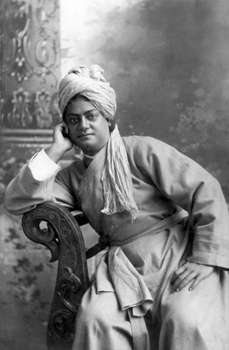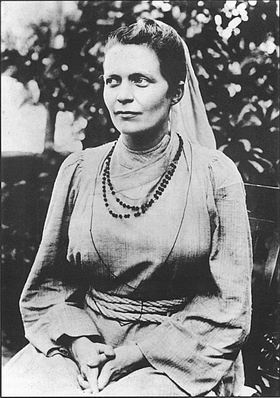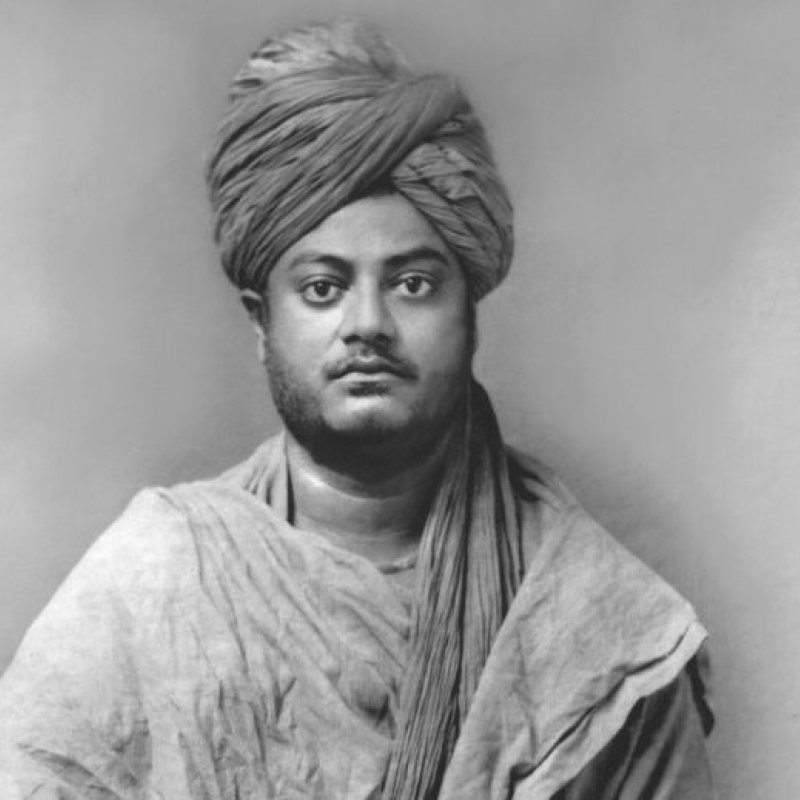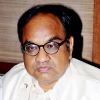Swami Vivekananda is mostly taken to be a patriot or a prophet of modern India, but buried within these characterisations are also somewhat intriguing comments on contemporary Indian society that are not as well known, including his views on women and women empowerment. On this International Women's Day, Sahapedia takes a look at how Vivekananda addressed the 'woman question' as part of the Hindu reformist movement (Photo Source: Wikimedia Commons)
The ‘Woman Question’ formed an integral part of Hindu reformism in 19th-century India and this was a question on which Swami Vivekananda, not unlike his forebears, wrote copiously and conservatively. The ‘Woman Question’ did not adopt an argumentative framework that was meant to empower women, at least not in the foreseeable future. Rather, it was an attempt to suitably come to grips with and circumvent emerging modernist critiques that bemoaned the despicable status of the contemporary Indian woman and the burden of various social and cultural obligations that society placed on her.
For instance, the Hindu intelligentsia of the day found it hard to fully ignore the argument that the developmental status of a society could be reasonably judged by the way it treated its women. Given this historical context, Hindu reformist discourse on women was thus characterised by an inner tension and ambivalence which also, on occasions, defeated the very agenda of meaningful change or reform. This discourse encouraged female education but disallowed the educated woman a free choice of a vocation, the age at which to marry or the choice of a partner.

Swami Vivekananda perceived women differently in their religious and social roles (In pic: A photograph of Vivekananda in San Francisco, California, 1900; Photo Source: Wikimedia Commons)
In principle, it did permit the marriage of widows but distinctly preferred the marriage of child widows to the woman widowed in adulthood. In the self-understanding of most male reformers, what was at stake here was the notion of the woman’s chastity (satitwa) which, in their perception, was one of the pillars supporting Hindu society. On this question, the most conservative voices were simply horrified by the alleged ‘unfaithfulness’ of the widow. Located as he was in late 19th century India, Vivekananda was also deeply influenced by the conservative backlash of this period which took Hinduism to be visibly endangered by alien thought and ways of life.
Significantly enough, Vivekananda perceived women differently in their religious and social roles. As a repository of traditional religious or domestic values, the Hindu woman was undoubtedly important. As a mother she was the keeper of progeny and as a wife, the pivot on which revolved the Hindu’s domestic economy. Not surprisingly, then, Hindu conservatives (including some of the greatest names in the Bengali literary world of the 19th century such as Bankim Chandra Chatterjee, Bhudev Mukhopadhyay, Indranath Bandyopadhyay, etc.) were greatly offended and worried by the newly educated woman allegedly falling prey to a growing consumerism and making unreasonable demands on already paltry, clerical budgets. Vivekananda believed that a woman’s pining for her beloved (reminiscent of the mythical Radha in Vaishnava folklore) represented the highest metaphor for God realisation. As a social object, however, the woman still needed to be handled carefully.
For one, female sexuality was still the biggest threat to male continence and evidence suggests that particularly as a monk, the Swami felt threatened even by the doting affection and admiration he received from his most celebrated female pupil, Sister Nivedita (1867–1911). Like his guru, Sri Ramakrishna (1836–86), Vivekananda advocated the idea of de-sexualising the woman by conferring upon her the status of the mother. The Hindu’s domestic and social ideal was indeed the mother, not the wife and far less, a sister. A woman and wife could easily forsake a man, never the mother. Not surprisingly, then, the Swami’s preferred ideals were Sita, who willingly withstood every test of loyalty, and Savitri, whose single-minded devotion reportedly brought back a dead husband to life.

Swami Vivekananda apparently felt threatened even by the doting affection and admiration he received from his most celebrated female pupil, Sister Nivedita (in pic; Photo Source: Wikimedia Commons)
It is intriguing, though, that this list of ideal Hindu women also includes the 16th-century female saint-poet Mira Bai, who is known to have challenged both patriarchy and the burden of domestic obligations for the woman. Vivekananda took the woman to represent not merely the frailty of body and mind but an emasculating influence that visibly robbed the man of his manliness. She was occasionally capable of courage and heroism, but importantly this emerged only in the context of her fidelity or chastity being put to test. Vivekananda had great admiration for Padmini, the ‘brave’ Rajput princess who, rather than surrender to another man’s lust, chose to immolate herself in the husband’s funeral pyre.
In the context of a burgeoning Hindu nationalism of the period, virile and vigorous in its ambitions, the emasculation of the man was something to be deeply frowned upon and here, the Swami’s target was both the lyrical if also erotically charged poetry of Rabindranath Tagore (1861–1941) and Vaishnava devotional culture. Vivekananda warned Nivedita to stay clear of the influences of the Tagore family which, allegedly, was spreading ‘erotic venom’ among an already effeminate people. ‘…this jumping about with the accompaniment of the khol and kartal has ruined the nation’, he once admonished a disciple, ‘Do we not have the drum and bugle? Let our children hear their sonorous, soul-stirring sounds…listening to womanish kirtan has rendered this country into a country of women!’
His patriotism at times persuaded Vivekananda to take quite indefensible positions. Once, when answering accusations made by an American audience about the ill treatment of the Hindu widow, he denied that they were at all subjected to ‘any particular hardship’. The self-immolation of the sati, he claimed, was no worse than the burning of witches on the stake by the church in medieval Europe. However, his patriotism or the conservatism on social questions would not by themselves fully explain such postures for, some of his Hindu contemporaries and near contemporaries, otherwise known to be orthodox, did assume reformist postures. Thus, Swami Dayanand Saraswati (1824–83) and the Arya Samaj seriously agitated in favour of widow marriage, and in Bengal itself the Pandit Mritunjay Vidyalankar (1762–1819) of Fort William College, who accused Raja Rammohun Roy (1774–1833) of misplaced innovations in Hindu religious life, anticipated him in the matter of seeking a prohibition on the practice of sati.
Swami Vivekananda and many men of his generation were caught in the critical dilemma of choosing between political liberation and the social (In pic: Statue of Swami Vivekananda near Gateway of India, Mumbai; Photo Source: Wikimedia Commons)
There is a particularly interesting statement made by Vivekananda which can be read in radically different ways. Several times in his life and career, Vivekananda warned men against determining the course or pace of woman related reform, arguing that this was best left to women themselves. He said, ‘No man shall dictate to a woman nor women to a man...women will work out their destiny better than men can ever do for them. All mischief has come because men undertook to shape the destiny of women.’ On one level surely, this carries elements of feminist self-determination and yet a very different meaning may also be read into this statement. It is quite possible that here the Swami was warning ‘zealous’ male reformers against over-reaching themselves on so delicate a matter as woman-related reform. Perhaps, it was also his intention to focus greater attention on what he himself termed as ‘root and branch reform’; to bring basic literacy to the illiterate, to suitably educate upper class men and women in the modern philosophical and scientific discourse coming from the West, to adopt constructive self-help programmes that would instil both a sense of pride among colonised Indians and help alleviate India’s mass poverty.
An effective critique of this position, however, was suggested by the reformer from contemporary Maharashtra, Mahadev Govind Ranade (1842–1901), who argued that it was incumbent upon men to speak up for such marginalised social groups like women and children who could not speak for themselves.
Swami Vivekananda and many men of his generation were caught in the critical dilemma of choosing between political liberation and the social. It is now commonplace that over time, our anti-colonial movement turned socially more conservative and the argument often given in support was that whereas social issues divided Indians, politics united them. It was left to Gandhi to meaningfully attempt to draw the two paths closer.
Views expressed are personal. This article was also published on The Wire.












